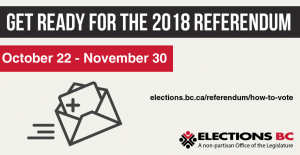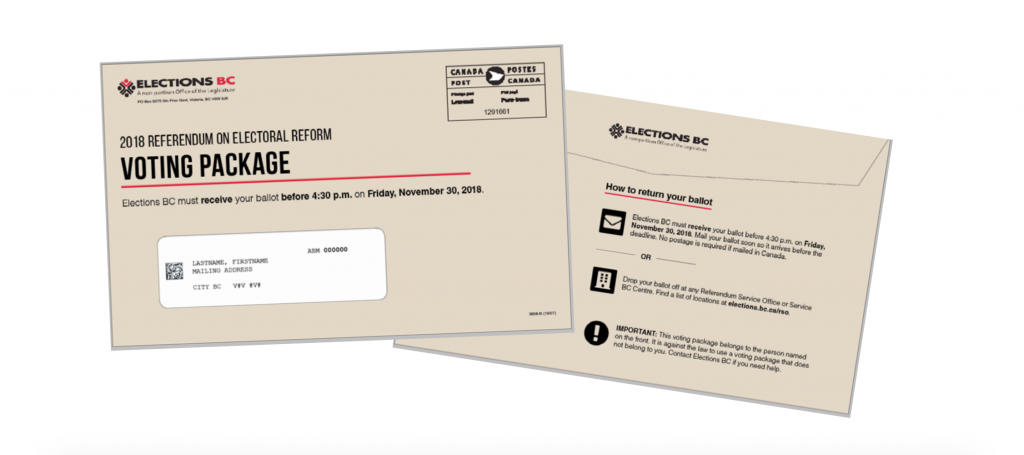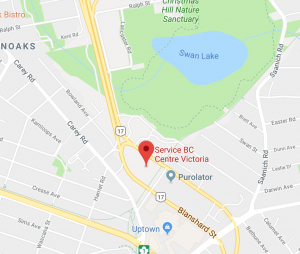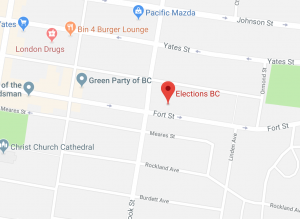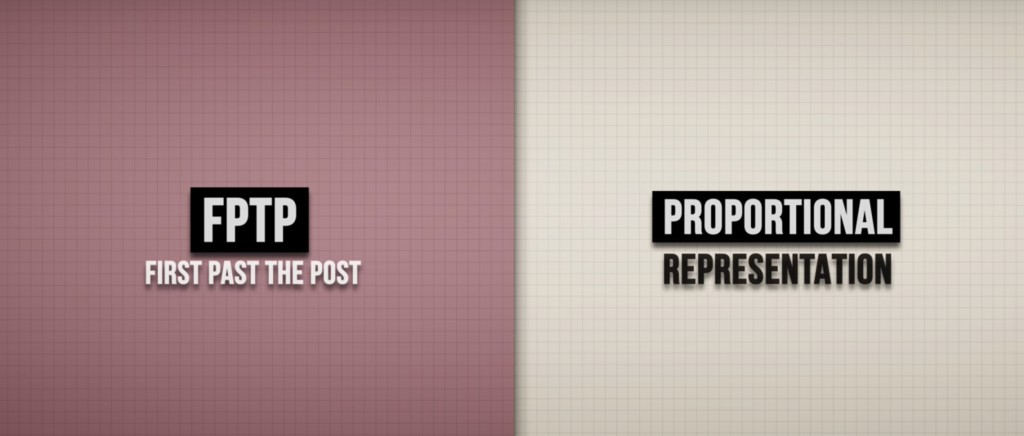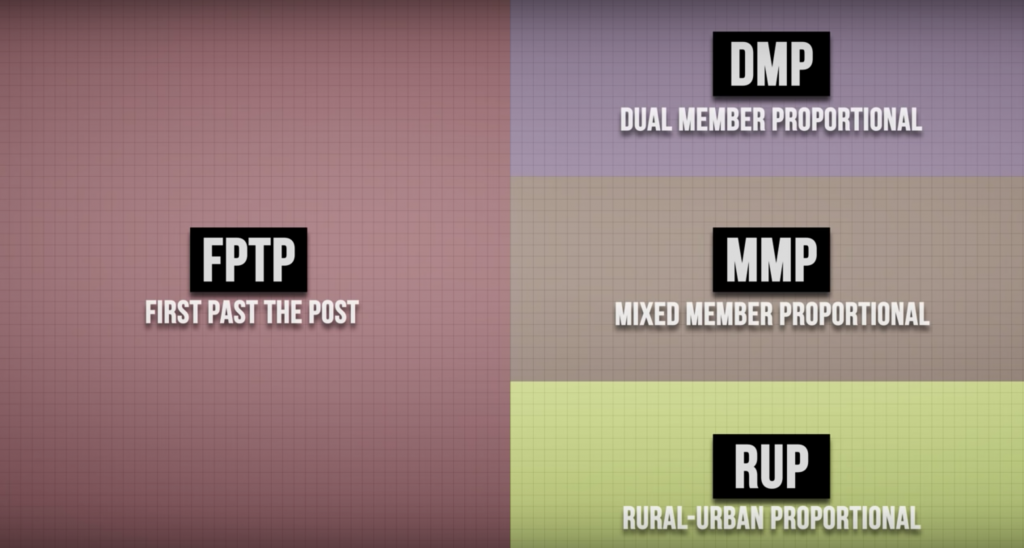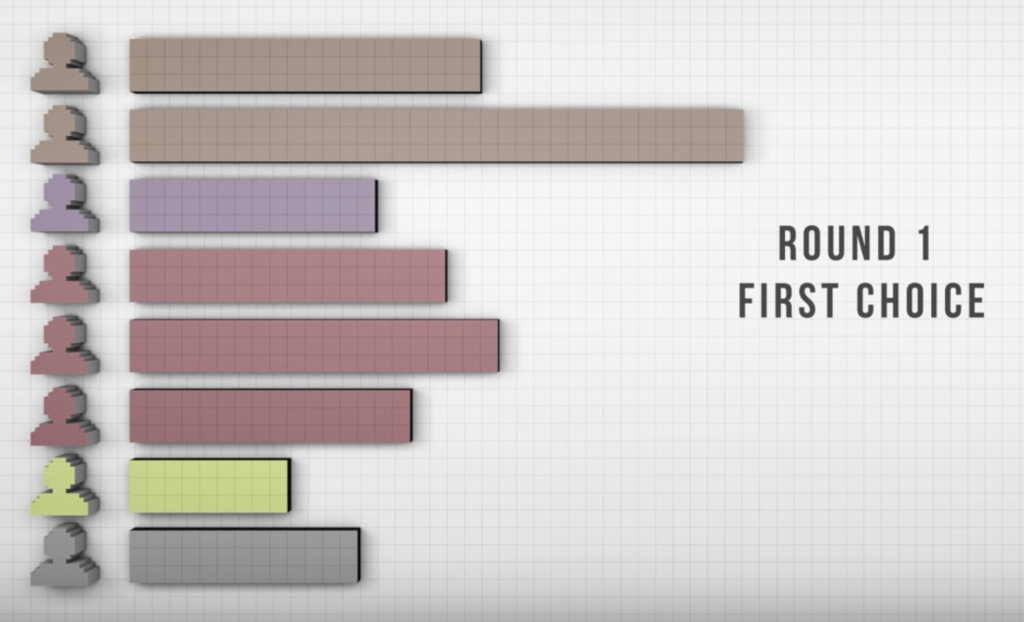All About the Referendum on Electoral Reform
What is a referendum? Why should you vote? What is proportional representation?
These might be questions you are starting to think about or perhaps these questions haven’t crossed your mind at all because you had no idea there was a referendum going on! I’m hoping to make the voting process for this referendum accessible to all students and encourage you to make an informed decision about the potential electoral reform.
Who can vote?
First things first. Students from UVic come from all over the world and have many different circumstances and that can change your eligibility to vote. Here are some guidelines on who can vote in this referendum.
- You must be a Canadian citizen.
- You must be 18 years old or older by November 30th, 2018.
- You must be a resident of BC for at least 6 months immediately before November 30th, 2018. (You must have a piece of mail or an ID with a BC address.)
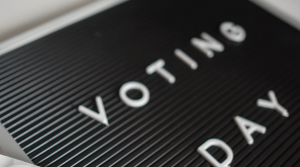 Now, if after reading these guidelines you’ve found out that you are not eligible to vote, please do not stop reading!
Now, if after reading these guidelines you’ve found out that you are not eligible to vote, please do not stop reading!
Though you may not be able to vote right now, that does not mean that you should not care about electoral reform. Many of the friends you have met at school may continue to live in BC and will be affected by the results of this referendum, you may one day decide to become a Canadian citizen and you will face the results of this referendum, and most importantly no matter where you live or where you are from it is vital to understand voting systems and how they can change the way officials in the country you live in are elected.
How can we vote?
If you are a registered voter in BC you should have already received your voter package in the mail. But no worries if you haven’t! You can request a package here. You must request before midnight on November 23rd!
You can also call call 1-800-661-8683 to request a package. This line will be in service Mon-Fri, 8AM to 8PM as well as Sat 9AM to 4PM.
You can even visit a Service BC Centre or a Referendum Service Office. There are two in Victoria. If neither of these are particularly close you can look for other locations here.
Referendum Service Office: 100 – 1112 Fort St., Victoria.
Service BC Centre: 403 – 771 Vernon Ave, Gateway Village, Victoria.
Your voter package must be received by Elections BC by 4:30PM on November 30th (they can be mailed in or delivered to a Service Office). This means that if you are running late on completing your ballot you might want to think about finding a nearby Service Office to ensure it arrives in time.
What are we voting for?
So, back to the big question. What even is a referendum. What are we voting for?
A referendum is a direct vote in which an entire electorate is invited to vote on a particular proposal. This may result in the adoption of a new law. In this case the “electorate” refers to British Columbia and the “particular proposal” refers to electoral reform.
I know, I know. Now you want to know what electoral reform means, right? Basically, our provincial elections use a voting system called First Past the Post (FPTP). Electoral reform refers to a change in the voting system we are using.
Now, this referendum didn’t come from thin air. The public has been asking for it for a long time. People are not happy with the way FTPT elects our officials and they want a change. But what kind of change are they asking for?
What is Proportional Representation?
In our current system a party that gets only 40% of the vote may get 100% of the power. Proportional representation is about giving a proportional amount of power to each party. A party that gets 40% of the vote will get 40% of the power.
This referendum has two questions. The first is:
- Should we keep the current First Past the Post system or should we move to a system of Proportional Representation.
The second question asks voters to rank three proportional systems.
- Dual Member Proportional
- Mixed Member Proportional
- Rural Urban Proportional
I will be explaining the basics of each proportional system to give you an idea of what each one entails but there are countless websites, articles, and blogs that can give you much more detailed explanations and examples. Some of those resources can be found on the Elections BC site, this video from The Tyee, and on the Sierra Club’s site.
Dual Member Proportional System
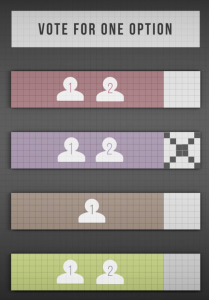 In this system, districts will be combined with neighbouring districts and each of these combined districts will be represented by two MLAs (this means the actual amount of MLAs will still stay the same).
In this system, districts will be combined with neighbouring districts and each of these combined districts will be represented by two MLAs (this means the actual amount of MLAs will still stay the same).
These combined districts will run one or two candidates on the ballot, a primary candidate and a secondary candidate. Voters choose one candidate and the candidate with the most votes wins the first seat (this stays the same as the current system).
Now, here is where the change really comes in. The second seat will be allocated based on each party’s share of the popular vote. For example, let’s say there are 100 seats. If a party won 10% of the vote, they would receive 10 seats. But maybe this party only won 2 seats directly through the voters. Because they are entitled to 10% of the total seats, they will be awarded 8 extra seats to proportionally represent the votes they received as a party. These seats will be given to candidates in districts were the party did particularly well.
Important things to note:
- A party must receive at least 5% of the province wide vote to receive any secondary seats.
- Larger rural districts will not be combined with neighbouring districts and will be represented by one MLA.
Mixed Member Proportional System
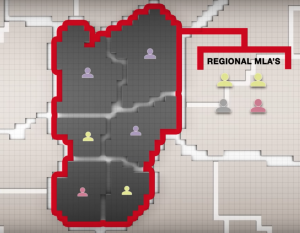 In this system, the province is divided into electoral districts which are grouped into regions.
In this system, the province is divided into electoral districts which are grouped into regions.
Each district still has one MLA and this MLA is elected by getting the most votes in their district (this stays the same as the current system). However, now each region (containing several districts) will also have a several regional MLAs. Regional MLAs would be elected from a party list.
If there are 100 seats, and a party were to win 40% of the province wide popular vote this would mean they are awarded 40 seats in total. These seats are filled primarily with the district MLAs that won the majority vote in their respective districts.
Continuing with this example, if this party won 30 district MLAs, this leaves 10 seats that need to filled by this party in order to keep their party proportionally represented. These seats are filled by regional MLAs which would be elected from a party list. (Because these regional MLAs are awarded seats from being listed on a party list this means the voters do not directly vote for them.)
Important things to note:
- A party must receive at least 5% of the province wide vote to receive any regional seats.
- Even if a party does not win any district seats, as long as they have 5% or more of the province-wide vote, they will still be awarded regional seats
Rural Urban Proportional System
This system combines two different systems. Rural parts of BC will use the Mixed Member Proportional system (explained above) and urban parts of BC will use the Single Transferable Vote system.
Single Transferable Vote districts would be larger than our current districts and would be represented by several MLAs (between 2 and 7). Voters would rank their preferred candidates on the ballot. Each party can have more than one candidate on the ballot.
There are several rounds of counting votes in the Single Transferable Vote system. The first count looks at how many votes each candidate received for “first choice/first rank”. To win a seat in this first count, a candidate would need a certain amount of votes (the exact number would be determined if this system is put in place and would also vary in each district). Any candidate that has this number of votes would be elected.
When a candidate has more than the required amount of votes needed to be elected, the extra votes are transferred to other candidates. These votes are transferred by using the results of the voters’ second choice.
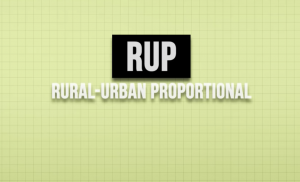
If, after transferring votes, there are no winning candidates, the candidate with the least amount of votes has all of their votes transferred to the voters’ next choice. These rounds of counting continues until every single seat is filled.
Important things to note:
- Voters do not have to rank all candidates on the ballot but they do have to rank at least one (their first choice).
Final Thoughts
These different proportional systems can be confusing to fully grasp but that shouldn’t discourage you from voting. Any proportional system is still a step towards creating a government that truly represents the actual desires and preferences of the voters as opposed to a majority rules kind of system. Here is a video that was particularly helpful to me when I began trying to understand all these different proportional systems.
If you are eligible to vote in BC’s 2018 Referendum on Electoral Reform, please vote! If you are ineligible to vote, please encourage eligible friends or share this post to allow others to learn about BC’s voting system.

